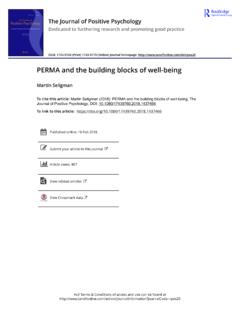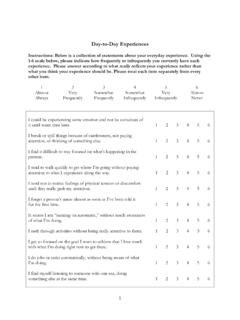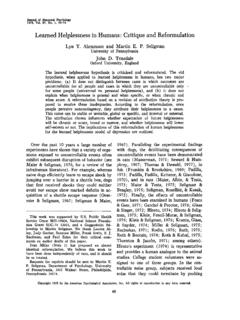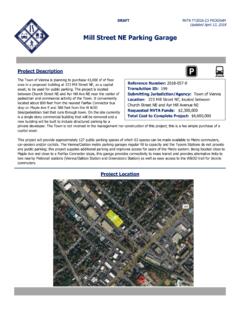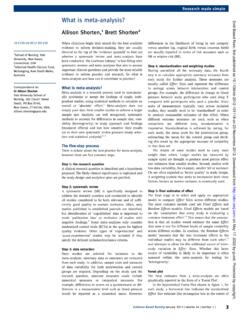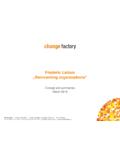Transcription of Learned Helplessness: Theory and Evidence
1 \,Journal ol Experimental Psychology: General1976, Vol. 105, No. 1, 3-46 Learned helplessness : Theory and EvidenceSteven F. Maier Martin E. P. SeligmanUniversity of Colorado University of PennsylvaniaSUMMARYIn 1967, Overmier and Seligman found that dogs exposed to inescapable andunavoidable electric shocks in one situation later failed to learn to escape shock ina different situation where escape was possible. Shortly thereafter Seligman andMaier (1967) demonstrated that this effect was caused by the uncontrollability ofthe original shocks.
2 In this article we review the effects of exposing organismsto aversive events which they cannot control, and we review the explanationswhich have been seem to be motivational, cognitive, and emotional effects of uncontrol-lability. (a) Motivation. Dogs that have been exposed to inescapable shocks donot subsequently initiate escape response in the presence of shock. We reviewparallel phenomena in cats, fish, rats, and man. Of particular interest is thediscussion of Learned helplessness in rats and man. Rats are of interest becauselearned helplessness has been difficult to demonstrate in rats.
3 However, we showthat inescapably shocked rats do fail to learn to escape if the escape task is rea-sonably difficult. With regard to man, we review a variety of studies using in-escapable noise and unsolvable problems as agents which produce Learned helpless-ness effects on both instrumental and cognitive tasks, (b) Cognition. We arguethat exposure to uncontrollable events interferes with the organism's tendency toperceive contingent relationships between its behavior and outcomes. Here wereview a variety of studies showing such a cognitive set. (c) Emotion.
4 We re-view a variety of experiments which show that uncontrollable aversive events pro-duce greater emotional disruption than do controllable aversive have proposed an explanation for these effects, which we call the learnedhelplessness hypothesis. It argues that when events are uncontrollable the organismlearns that its behavior and outcomes are independent, and that this learning pro-duces the motivational, cognitive, and emotional effects of uncontrollability. Wedescribe the Learned helplessness hypothesis and research which supports , we describe and discuss in detail alternative hypotheses which have beenoffered as accounts of the Learned helplessness effect.
5 One set of hypotheses arguesthat organisms learn motor responses during exposure to uncontrollable shockthat compete with the response required in the test task. Another explanationholds that uncontrollable shock is a severe stressor and depletes a neurochemicalnecessary for the mediation of movement. We examine the logical structure ofthese explanations and present a variety of Evidence which bears on them F. MAIER AND MARTIN E. P. SELIGMANWhat follows are three instances of thephenomenon to be explained:1. When placed in a shuttle box an ex-perimentally naive dog, at the onset of thefirst electric shock, runs frantically about,until it accidentally scrambles over the bar-rier and escapes the shock.
6 On the nexttrial, the dog, running frantically, crosses thebarrier more quickly than on the precedingtrial. Within a few trials the animal be-comes very efficient at escaping and soonlearns to avoid shock altogether. After about50 trials the dog becomes nonchalant andstands in front of the barrier. At the onsetof the signal for shock, the dog leaps grace-fully across and rarely gets shocked dogs first given inescapable shock in aPavlovian hammock show a strikingly dif-ferent pattern. Such a dog's first reactionsto shock in the shuttle box are much thesame as those of a naive dog.
7 He runsaround frantically for about 30 sec, but thenstops moving, lies down, and quietly 1 min. of this, shock terminates auto-matically. The dog fails to cross the barrierand escape from shock. On the next trial,the dog again fails to escape. At first hestruggles a bit and then, after a few seconds,seems to give up and passively accept theshock. On all succeeding trials, the dogcontinues to fail to A college student is confronted with aseries of 25 letter anagrams, each with thesame pattern, 34251. He has a little troublewith the first one, taking about 45 sec tosolve it.
8 He solves each of the next threein about 30 sec, and now he sees the of the last 16 anagrams is solved im-mediately. In striking contrast is the collegestudent who has first faced a series of dis-crimination problems which are unsolvableor a series of loud tones which are inescap-able. He works hard on the first anagram,trying many rearrangements of letters, butfails to solve it in the 100 sec allowed. HeThe preparation of this manuscript was supportedby Grant MH26827-01 to Steven F. Maier andGrant MH19604-01 to Martin E. P. for reprints should be sent to StevenF.
9 Maier, Department of Psychology, Universityof Colorado, Boulder, Colorado to solve the second one also. The thirdanagram, a relatively easy one, he solves,after about 60 sec. He fails to solve thenext eight, appearing to give up after about60 sec with, each one. He then solves sixin a row, but very slowly, and finally sees thepattern. He now solves the final three A naive rat is placed in a shuttle boxand trained to escape from shock. Shockterminates immediately upon his running tothe opposite side; he learns readily, andescapes efficiently.
10 A second rat who hadreceived inescapable shock earlier in anotherapparatus learns just as well as the first ratto escape in the shuttle box. Now, how-ever, the contingency between crossing theshuttle box and shock termination is ob-fuscated ; shock does not terminate im-mediately upon crossing, but only after 3 secelapse. The first rat continues to escapereadily, learning to bridge a 3-sec delay ofreinforcement. The second rat, however,fails to respond; on other trials, he runsacross during shock, but overall he shows nolearning believe these three phenomena are allinstances of " Learned helplessness ," instancesin which an organism has Learned that out-comes are uncontrollable; by his responsesand is seriously debilitated by this knowl-edge.

